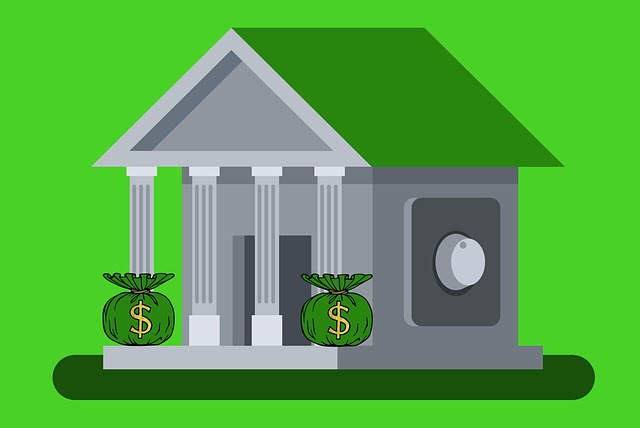Lender interest rates, expressed as percentages, determine the cost of borrowing for loans like mortgages, auto loans, and personal loans. Lower rates reduce expenses over time while higher rates increase borrowing costs. Fixed rates offer consistent payments, while variable rates fluctuate based on economic indicators. Factors like credit score, loan type, amount, term length, market conditions, and lender financial health impact interest rates. Comparing multiple lenders' offers, scrutinizing the Annual Percentage Rate (APR), and considering loan terms and pricing structures are vital steps to securing favorable financing and saving thousands over time.
“Unraveling the complexities of lender interest rates is a crucial step in securing the best financial deals. This comprehensive guide will empower you to navigate the lending landscape with confidence. We’ll break down the fundamentals, exploring what these rates are and why they significantly impact your borrowing costs. From fixed to variable rates, understand their dynamics. Learn about the factors lenders consider when offering interest rate terms. Discover a step-by-step approach to compare rates effectively and unlock insider tips for securing favorable terms on your loan.”
- Understanding Lender Interest Rates: What They Are and Why They Matter
- Different Types of Interest Rates: Fixed vs. Variable
- Factors Influencing Lender Interest Rate Offers
- Steps to Compare Lender Interest Rates Effectively
- Tips for Securing the Best Interest Rate on Your Loan
Understanding Lender Interest Rates: What They Are and Why They Matter

Lender interest rates are the costs associated with borrowing money, expressed as a percentage of the loan amount. They represent the return that a lender expects for providing financing to a borrower. Understanding these rates is crucial because they significantly impact the overall cost of your loan. When you take out a mortgage, auto loan, or personal loan, the interest rate determines how much you’ll pay beyond the principal amount borrowed.
Each lender calculates and sets its interest rates based on various factors, including market conditions, risk assessment, and competition. Lower interest rates mean less expense over time for borrowers, while higher rates increase the overall cost of borrowing. By comparing lender interest rates, borrowers can secure more favorable terms, potentially saving thousands of dollars over the life of a loan.
Different Types of Interest Rates: Fixed vs. Variable

When comparing lender interest rates, understanding the difference between fixed and variable rates is crucial. Fixed rates remain constant throughout the entire loan term, providing borrowers with predictable monthly payments. This stability can offer peace of mind, as it shields against unexpected increases in the future. On the other hand, variable rates fluctuate based on underlying economic indicators, such as the prime rate or LIBOR. While these rates might initially appear lower, they carry the risk of rising significantly over time, leading to higher overall loan costs.
Borrowers should carefully consider their financial situation and tolerance for risk when choosing between fixed and variable rates. For those seeking long-term stability and predictable payments, a fixed rate is often the safer bet. Conversely, borrowers comfortable with potential rate swings and aiming for lower initial payments might opt for a variable rate, keeping in mind the possibility of future adjustments.
Factors Influencing Lender Interest Rate Offers

When comparing lender interest rates, it’s crucial to understand that various factors shape the offers you receive. These include your credit score and history—lenders view a strong credit profile as lower risk, often resulting in better rates. The type of loan, such as for a home or personal use, also plays a significant role; mortgages generally have lower rates due to the security of real estate collateral. Additionally, loan amounts matter; larger loans may attract higher rates because they pose a greater financial risk to lenders. Term length is another critical aspect; shorter-term loans usually come with lower interest rates but require more frequent payments. Market conditions and the lender’s own financial health can also influence interest rate offers. Lenders often adjust their rates based on prevailing economic trends, competitive pressures, and their own business strategies.
Steps to Compare Lender Interest Rates Effectively

Comparing lender interest rates is a crucial step in securing the best financing options for your loan or mortgage. Start by gathering quotes from multiple lenders, ensuring you’re obtaining comparable terms and conditions for an apples-to-apples comparison. Next, carefully examine the annual percentage rate (APR), which includes not just the interest rate but also other fees associated with the loan.
Consider the length of the loan term as well; shorter terms often result in lower interest rates but may increase your monthly payments. Weigh these factors and look for transparency from lenders regarding their pricing structures. Always ask about potential discounts or promotional rates, too, as these can significantly impact the overall cost of borrowing.
Tips for Securing the Best Interest Rate on Your Loan

When shopping for a loan, one of the most significant factors affecting your financial health is the lender interest rate. Securing the best rate can save you thousands over the life of your loan. Start by comparing multiple lenders to get a robust understanding of the market rates. Look beyond just the advertised figures; ask about the annual percentage rate (APR), which includes not just the interest but also any fees associated with the loan. Be transparent about your financial standing; share your credit history and debt-to-income ratio, as these significantly influence the rate offered.
Additionally, consider the term of the loan. Shorter terms usually come with lower rates but may increase your monthly payments. Longer terms reduce monthly outgoings but can result in paying more interest over time. Shop around for fixed rates, which provide consistent payments throughout the loan term, versus adjustable rates that can fluctuate based on market conditions. Finally, don’t be afraid to negotiate; lenders often have some flexibility, especially if you’re a preferred customer or have excellent credit.






